Sure, it’s blah out, and cold, but the hard part’s over. Punxsutawney Phil may predict six more weeks of winter, but what’s six weeks? After all we’ve been through, six weeks is nothing.
If you’ve been outside much, you must have noticed buds forming on the trees and daffodils beginning to sprout. More birds are at the feeder. This morning I spotted some early tulips the rabbits have munched down to the ground. The rabbits living in our yard are the size of cats. My strategy is to enclose plants they find attractive with cylinders of wire fencing. I have a lot of wire fencing.
Now that we’ve taken down some problem trees, we have two new areas to work on, one in back and another in the front of the house. My mind was blank about what to do with them, until suddenly it wasn’t. I’m thinking about planting red twig dogwoods.
A neighbor down the street planted a few in front of his house. They stand out against the yellow wall.
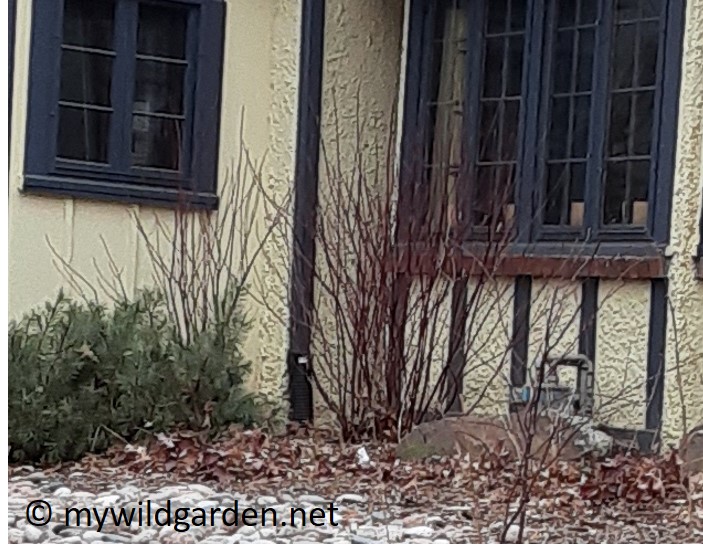
In real life they’re more colorful than the photo. The red branches are striking in winter, and I like the way they stand out against the snow. Copper and orangey tones lift the spirits on gray days. They remind me of the red willows growing along creeks and streams near Santa Fe.
Here’s what I’ve learned. Some dogwoods with red twigs are native to Asia, but Cornus sericea, commonly known as red twig dogwood or red osier dogwood, is native to North America. As the Missouri Botanical Garden (MOBOTGAR) says
- They tolerate shade but are happiest in sun.
- They require pruning, because the new stems have the most vivid color. “Any loss of flowers through spring pruning is not terribly significant since the small flowers of this dogwood are rather ordinary.”
- They spread by suckers.
- They look best planted in masses.
- Several articles recommend pairing them with yellow twig dogwoods
I think they might do well in the site I’m considering, although they will undoubtably disappear in front of the brick wall.
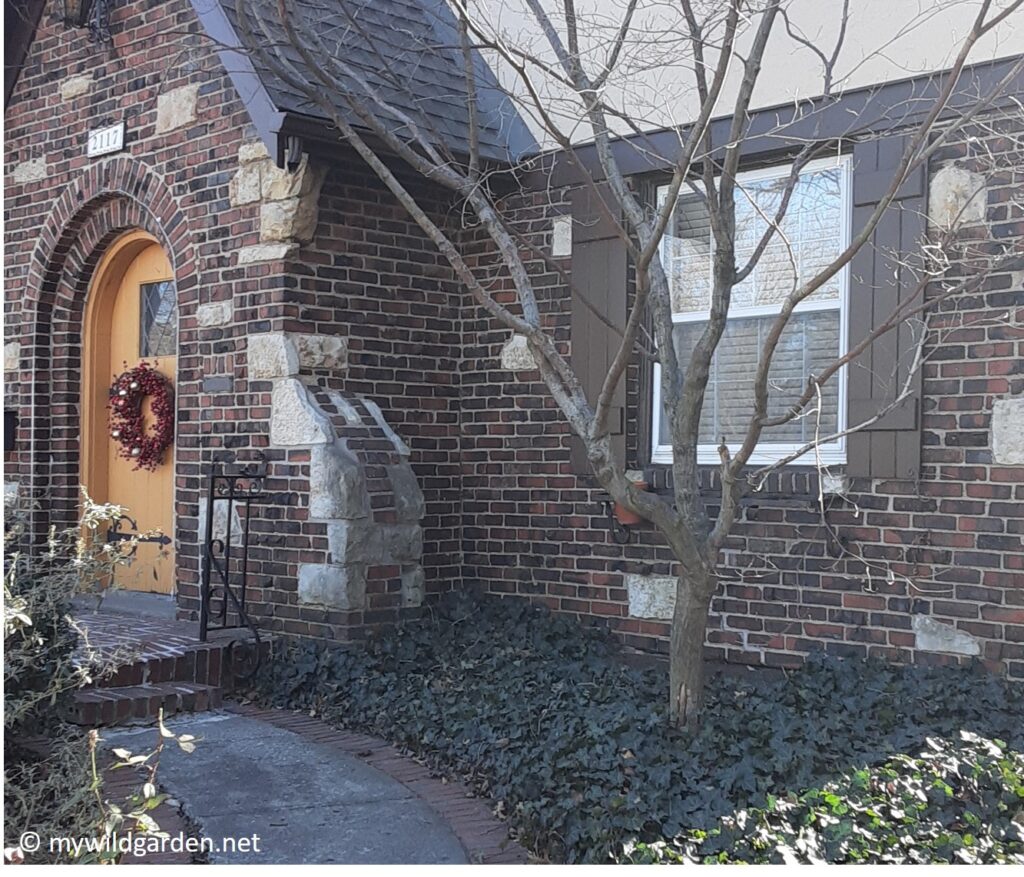

Maybe a yellow twig dogwood would be better, come to think of it. The site is shaded on the east by our vestibule, and the west by the neighbor’s spruce, which is ailing. MOBOGAR mentions that the dogwoods are vulnerable to bagworms, which is probably what’s plaguing the spruce, so that may be something to worry about. Also, since they grow to be six to nine feet tall, I will need to find a dwarf variety to prevent it from blocking the window. A quick search turns up a likely candidate, “Arctic Fire,” that tops out at 36-60 inches and is also more shade tolerant.
Incidentally, Scott Vogt, the instructor of the Dyck Arboretum’s Native Plant School class I attended in January, recommends dogwoods for wet areas.
As you can see from the photo, English Ivy covers this little plot. I will begin removing it on warm days, starting soon. I predict that will take quite a while–so expect posts about eradicating English Ivy in the next few weeks.
For this area, I also thought I might adapt this plan from Grow Native : Native Garden Design: Front Yard Formal Shade.
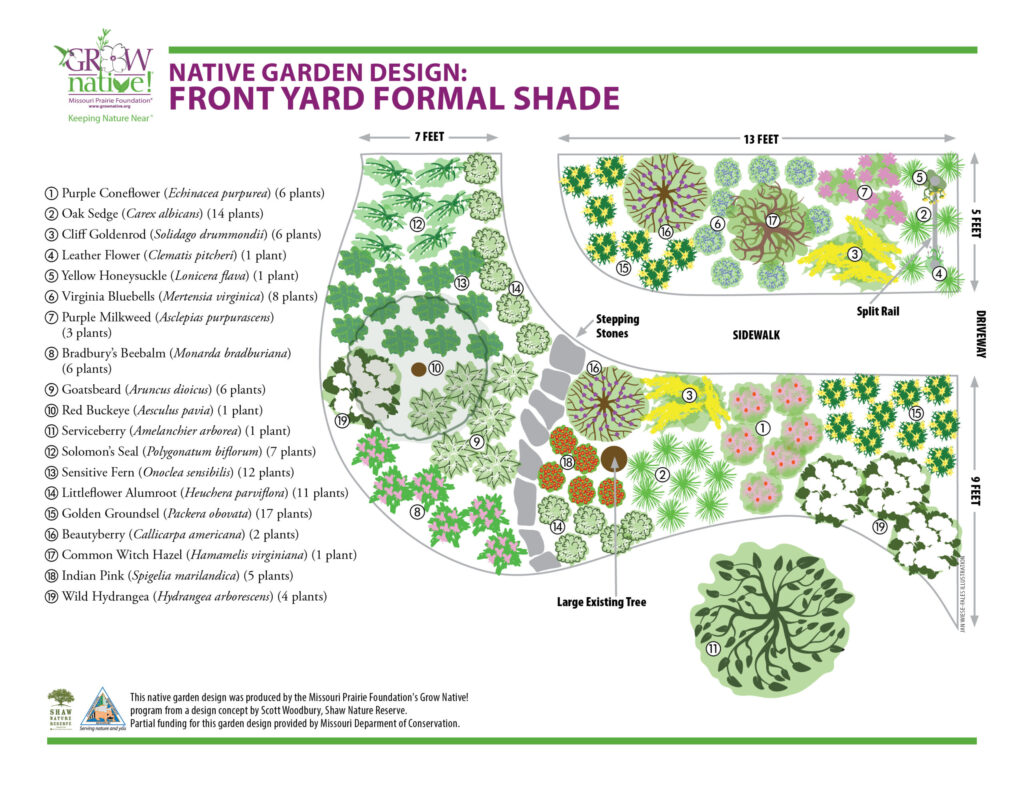
However, I’m not confident all of these plants will do well in such a shady spot. Solidago? Monarda? Seriously?
I very much like the look of this Golden Groundsel, Packera aurea.
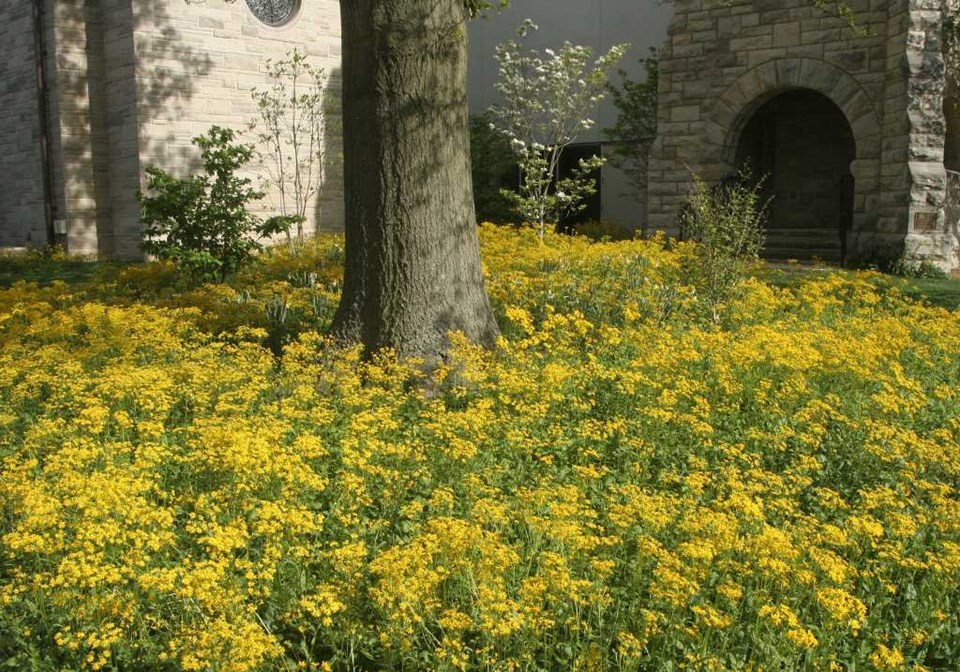
Doesn’t that look more interesting than English Ivy? It’s such a dark, forgotten corner right now, I love the idea of brightening it with color. The descriptions I’ve read of Packera aurea say “full sun to part shade,” so I will consult my knowledgeable friend before committing.
I still have time to plan before placing my order with Prairie Nursery on February 14. In the meantime, the most thrilling thing having to do with gardening that I saw this week was a presentation someone shared on Facebook by Andrew Marrs Garden Design in Bloomington, Indiana. They posted fifteen photos with descriptions that show before, during, and after the installation of a naturalistic garden in a suburban backyard, complete with plant descriptions. It is magnificent. Their business website shows images, but of the finished result, not the process. If you’re on Facebook, you should definitely take a look.
One of life’s great mysteries is that days scooch by, while years fly. Hang in there. Spring is on the way!
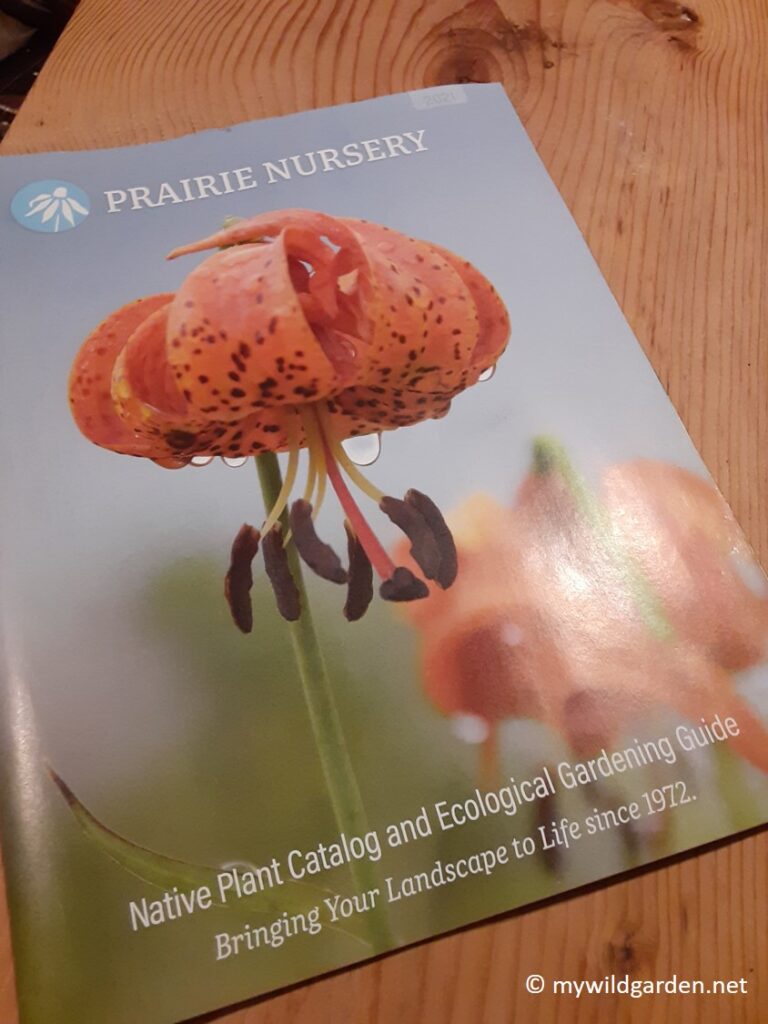
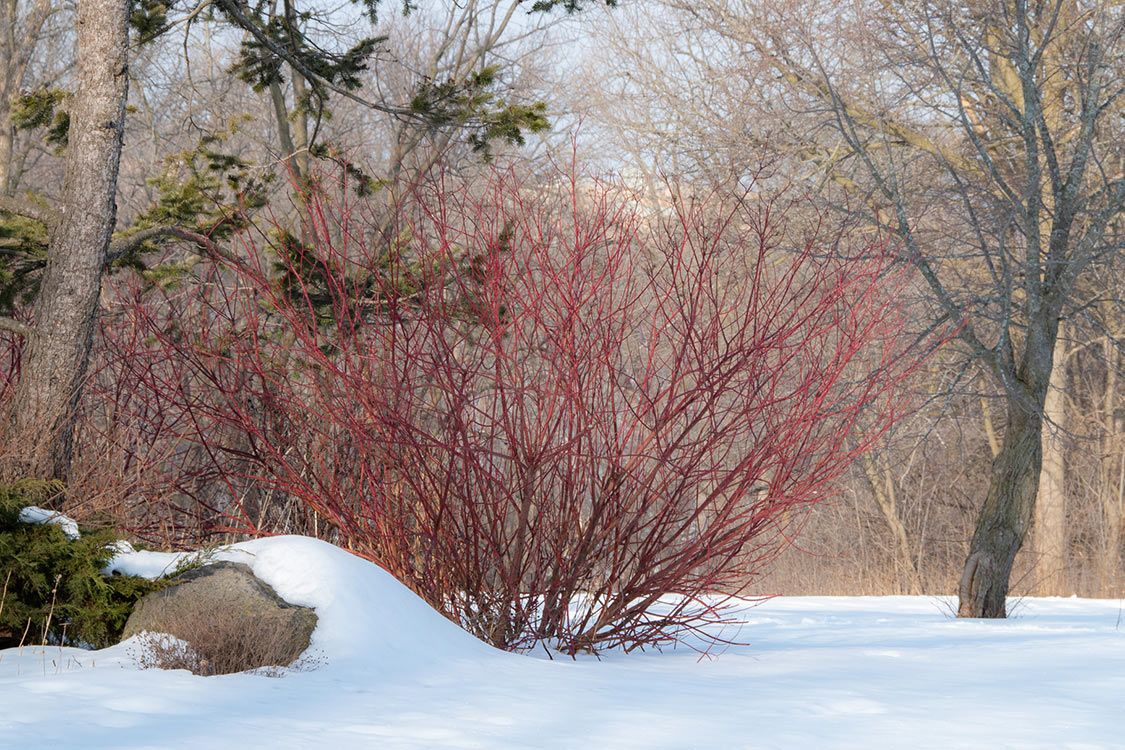
Mary,
I’m loving reading about your plans and the use of native plants over imports! Wish we could get dogwoods to grow in our yard. Maybe I’ll have to see what varieties can survive the dryness of a Texas Hill Country summer. I’m just not good if something requires watering.
Thanks for sharing! Looks like I’ll have to find a way to get up to KC somehow to see all of the progress (including the kitchen). Sending love,
Mary
Thanks, Mary. Aren’t flowering dogwood trees beautiful? We have two, a white and a pink one. The pink one is almost coral. I love them. The Missouri Botanical Garden website says they’re hardy in zones 5 – 9. Austin is zone 8b, so perhaps you could find a variety that could work there, or something similar. Good luck!